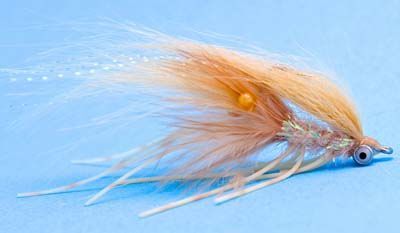The following recipe and tying instructions are from Drew Chicone’s E-book and print book called Redfish Flies
[dropcap]A[/dropcap]lthough the fly shown below was designed for redfish, as are all eight in Redfish Flies, certain modifications can be made to help it fish well in shallower, deeper or weedier water…
Step-by-step tying instructions to proven patterns for catching redfish, snook, bonefish and more. Redfish Flies , alone is a 175 page downloadable PDF illustrated with ultra-hi resolution images. For example, Redfish Flies captures the insights from eight saltwater fly tiers, including myself, Capt. Ron Ratliff, Capt. Daniel Andrews, Drei Stroman, Chris Kincaid, Capt. Joe Costadura, Bill Laminack, and Don Reed.
Fly patterns that mimic crustaceans, shrimps, crabs, worms and baitfish are all popular with any opportunistic flats or shallow water feeders: snook, bonefish, back country baby tarpon, redfish, migrating tarpon, permit, cobia, snappers and more.
Drew Chicone says: “Tying and designing flies for redfish or any species takes a little more than luck and a sharp hook.”
Materials Recipe – All items available at your local fly shop or favorite online store
Hook: Daiichi 2456 Size 2
Thread: Mono
Legs: Barred Round Rubber – Medium
Wing: Sand Craft Fur
Body: Bonefish Tan Cactus Chenille
Antena: Tan Krystal Flash
Collar: Palmered Natural Saddle Hackle
Eyes: 5/32nd dumbbell & Natural EP Shrimp Eyes
Adhesive: Clear Cure Goo Hydro
[information]Drew’s Saltwater Fly Tying website . . .
[/information]
Step 1:
Start the mono at the eye of the hook and wrap back 10-12 turns. Tie in a set of dumbbell eyes with a series of figure eight wraps. Once securely fastened in place advance your mono to the bend of the hook and tie in two strands of Krystal Flash at it’s middle.

Step 2:
Directly on top of the Krystal Flash, tie in a pencil-sized bunch of Craft fur and secure with 8-10 tight wraps. Advance the mono to the dumbbell eyes.

Step 3:
Measure a pair of EP Shrimp eyes so they extend past the bend of the hook about a 1/4″ and tie them in on top of the hook shank to create an even body. Separate the eyes around the bundle of Craft fur so they protrude away from the fly slightly on each side.

Step 5:
Palmer the hackle 5-6 turns to cover the bump of materials, tie off the excess tip of the feather, and cut away.

Step 6:
Tie in a 6 inch piece of Bonefish Tan Cactus Chenille with several tight wraps. Make a few wraps onto of the palmered hackle so when you palmer the chenille the tie buts of the feather are hidden.

Step 7:
Directly in front of the chenille, tie in a second pair of barred round rubber legs so that the forward facing half is slightly longer. If your leave the legs stuck together, they do not roll as much, and they are much easer to secure in place. Advance your thread and repeat. You will have to trim these slightly shorter than the pair in front. The legs should get shorter as you move toward the tail of the fly.

Step 8:
Advance your mono to the dumbbell eye. Palmer the chenille to the dumbbell eye wrapping between the rubber legs to separate them. Tie off the chenille behind the eyes and cut away the excess.

Step 9: Advance the mono thread in front of the dumbbell eyes and turn the fly over in the vise so it is hook up. On top of the dumbbell eyes, tie in a pencil-sized bunch of Craft Fur. The tips of the material should extend past the first bunch of Craft Fur. Secure in place with a series of tight figure eight wraps, whip-finish twice and cut away the mono. Cover the dumbbell eyes with a thin coat of Clear Cure Goo Hydro and cure.




